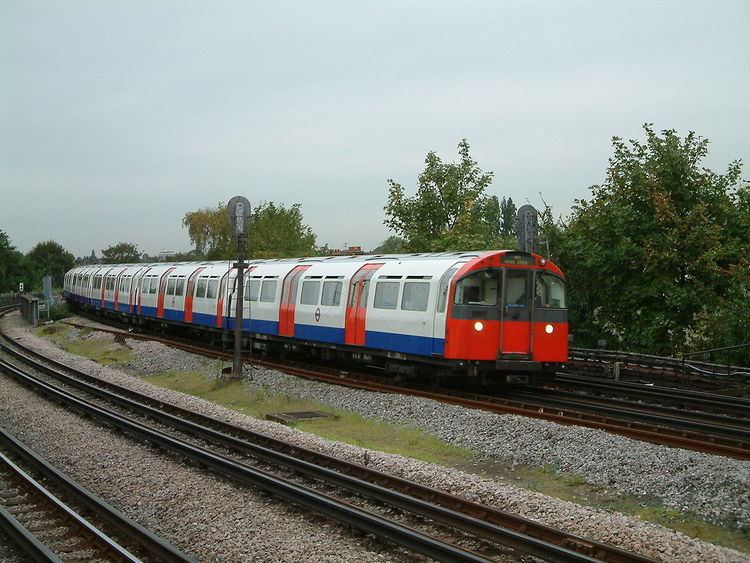In service 1975 – present Constructed 1974 – 1977 | Formation 6 cars per trainset | |
 | ||
Manufacturer Metro Cammell(now Alstom) Refurbishment Bombardier Transportation1996 – 2001 | ||
The 1973 Tube Stock is a class of deep-level train that operates on the Piccadilly line of the London Underground. It was introduced into service in 1975 with the extension of the line to Hatton Cross in 1975, followed by a further extension to Heathrow Central in 1977.
Contents
Built by Metro Cammell between 1972 and 1975, the stock was refurbished by Bombardier Transportation between 1996 and 2001.
Construction
In the early 1970s London Transport placed an order of 88 trains to replace the 1959 stock, the 1938 stock and 1962 stock vehicles which previously operated on the Piccadilly line. Built between 1972 and 1975 by Metro Cammell in Birmingham, the first unit entered service on 19 July 1975 and the last was introduced by 1977. The trains featured longer cars and larger door space than the previous ones, being designed for airport travellers with luggage.
The stock was refurbished by Bombardier Transportation between 1996 and 2001. Changes included the removal of transverse seating, strap hangers replaced with grab bars, new floor material, and a full repaint into London Underground's corporate livery.
Unit formation and operation
The peak Piccadilly line service requires 79 trains in operation. Each train is made up of two units of three cars.
The trains are maintained in Cockfosters and Northfields depots.
Like all London Underground trains, the stock operate on a four-rail 630V DC power system.
Announcer system
In November 2006, the system was reintroduced with another automated announcer featuring the voice of Julie Berry, with a simultaneous upgrade to the dot matrix displays in the carriages. The driver can select between two settings: "commuter" and "tourist". In addition to this, the driver can add extra announcements through a code for example "please stand clear of the doors" or "Let customers off the train first please"
The "Alight" sections include:
These "alights" are not included in the "commuter" setting.
Certain stations include announcements warning of the gap between the train and platform. Interchanges with other London Underground lines and other rail services are also included in announcements, such as Kings Cross St Pancras which includes St Pancras International.
Future replacement
The Deep tube programme (DTP) originally covered the replacement of the trains and signalling on the Bakerloo and Piccadilly lines, and had been expanded to cover rolling stock requirements arising from the planned extension of the Northern line to Battersea, the eventual replacement of Central line trains and proposed increased service frequency on the Northern and Jubilee lines. The EVO tube concept design, a lighter articulated train with walk through cars, was introduced early in 2011. In early 2014 the Bakerloo, Piccadilly, Central and Waterloo & City line rolling stock replacement project was renamed New Tube for London (NTfL) and moved from its feasibility stage to the design and specification stage. The proposal introduces fully automated trains and signalling to increase capacity first on the Piccadilly line in 2025, followed the Central, Waterloo & City, and Bakerloo lines by 2033. The fully automated trains may not have drivers, however the ASLEF and RMT trade unions that represent the drivers strongly oppose this, saying it would be unsafe.
